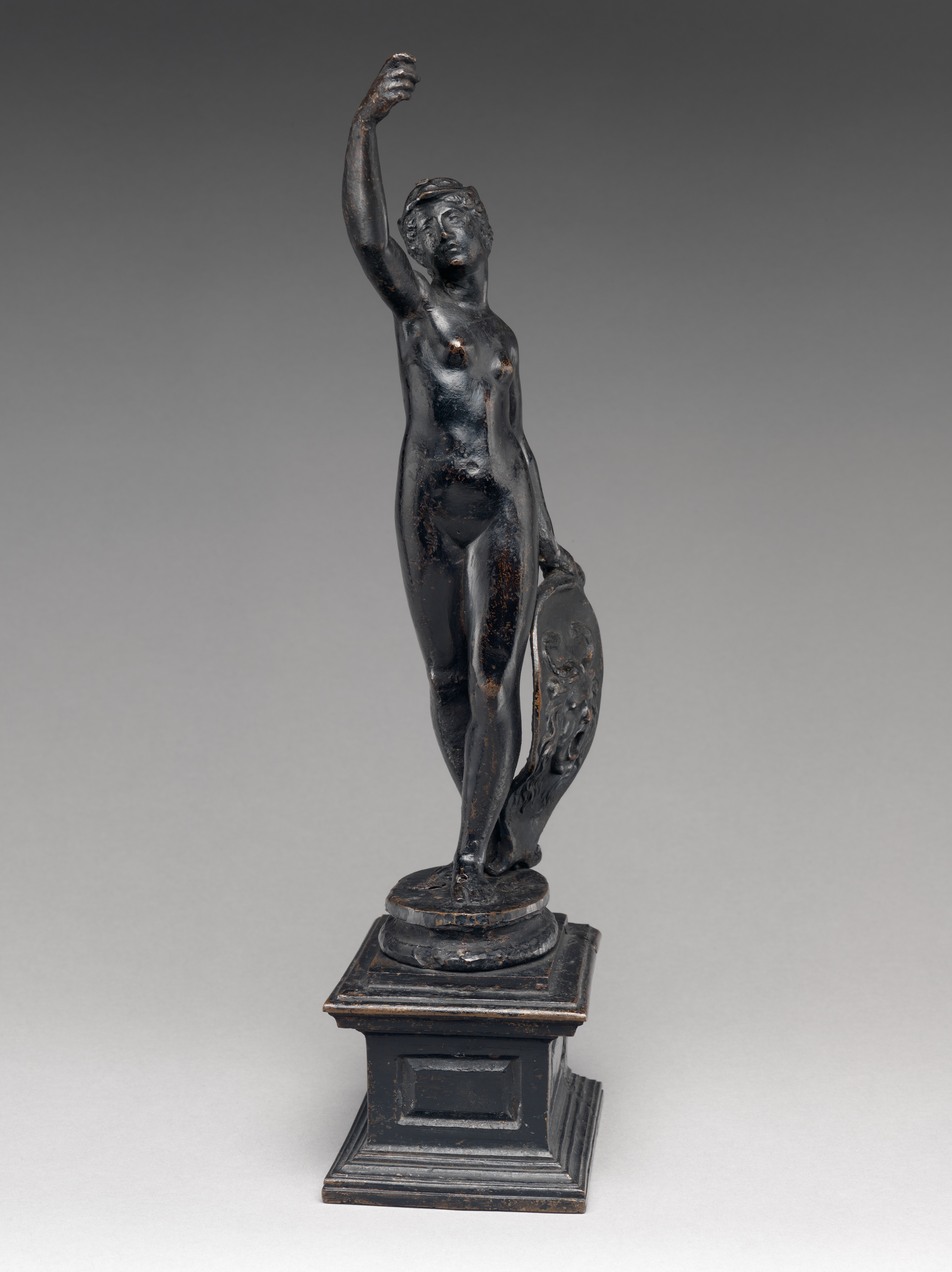Minerva
After a model by Benvenuto Cellini Italian
Not on view
The best version of this virginal goddess is arguably the one formerly in the John Postle Heseltine collection, London, which boasts more flowing hair and slightly ampler forms.[1] Another, damaged, in the Staatliche Kunstsammlungen, Dresden, wears a bigger helmet and points rather incongruously with her right hand to her forehead. It is recorded in the collection of Giovanni Maria Nosseni in Dresden in 1621.[2]
The scant literature on all four statuettes is contradictory. Some favor Florence—Benvenuto Cellini, no less[3]—while others prefer Venice, perhaps because of the gliding pose suggestive of the small bronzes of Alessandro Vittoria. In the absence of a superior example, it is difficult to take sides. The Met’s versions vary in quality but seem to have been cast with virtually identical alloys, suggesting they were produced in the same foundry.[4] Minerva A, the better of the two, with a nicely wrought expression and lovely limbs but little in the way of surface refinement, exhibits flaws and patches and some pitting on the back, and it has traces of what appears to be original black patina. In terms of quality, it occupies a place between the ex-Heseltine and Dresden bronzes. Minerva B, with an apparently Baroque Medusa’s head on her later shield and remains of glossy black paint, adds nothing to the argument either way.[5] The right hands of its three counterparts performed different functions; a strip remaining in that of the ex-Heseltine bronze does not suggest the edge of a shield.
-JDD
Footnotes
(For key to shortened references see bibliography in Allen, Italian Renaissance and Baroque Bronzes in The Metropolitan Museum of Art. NY: The Metropolitan Museum of Art, 2022.)
1. Bode 1907–12, vol. 2, pl. CXLVI.
2. Holzhausen 1933, p. 86, fig. 10 (as Venetian, 16th century). It then bore a greenish “archaeological” patina.
3. Following Bode (see note 1) and London 1912, cat. 49, as well as Rubinstein-Bloch, who catalogued them in 1926 in the Blumenthal collection, both Met bronzes were formerly called “free variants of the Minerva on the base of the Perseus in the Loggia de’ Lanzi, Florence” (ESDA/OF), but the relationship is generic and hardly compelling.
4. The base for Minerva B is of a similar composition. R. Stone/TR, April 20, 2009.
5. Minerva B was broken at the left wrist and subsequently repaired with a later cast of the hand and then-missing shield (note the different angle of the hand in Minerva A). L. Borsch/TR, 2021.
Due to rights restrictions, this image cannot be enlarged, viewed at full screen, or downloaded.
This artwork is meant to be viewed from right to left. Scroll left to view more.



